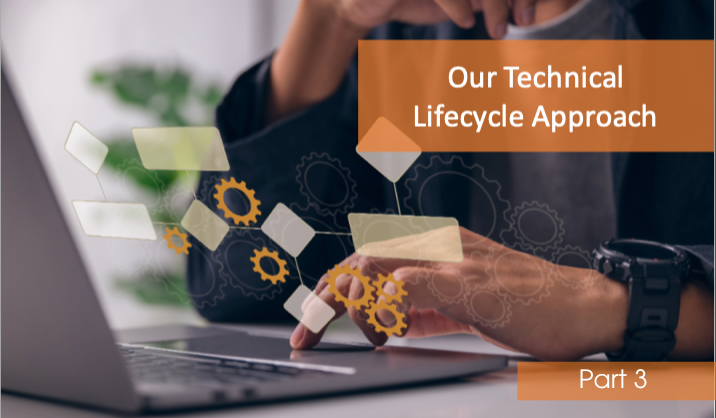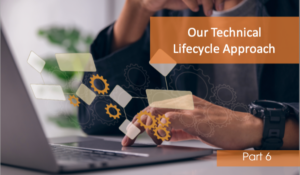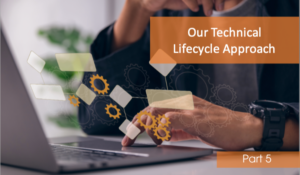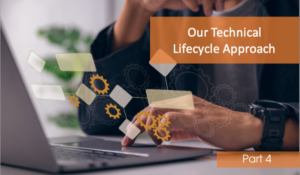Stage 3: Design – planning the optimum solution for your organisation
This is the third of our deep-dive articles, walking our customers through our new Technical Delivery Lifecycle approach, which we’ll implement in early 2024. If you haven’t already, please read the introductory article, which will give you an overview of our approach and what happens leading up to the Design stage.
How soon can the Design stage start?
We can move into the Design phase as soon as we’ve completed the Triage and Discovery stages, where we plan the optimum solution for your organisation.
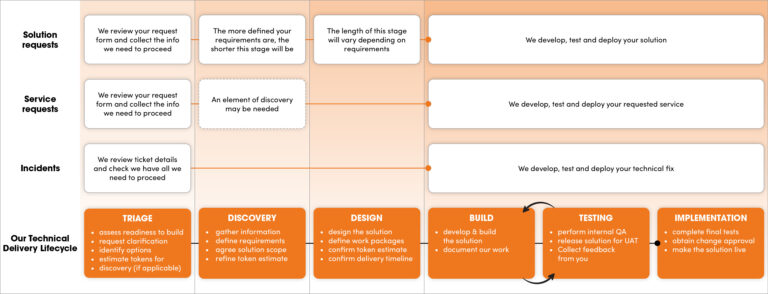
If everything has been done effectively in the first two stages – resulting in us having all the information we need to understand your requirements fully – the process should continue smoothly, leading us towards implementing a solution that delivers value for your business.
What happens at the Design stage?
Before we build your solution, we’ll carefully map out the work we’ll need to do and the order in which we’ll do it. This enables us to break it down into packages and give you an accurate idea of the cost of the work – i.e. how many tokens each step of this process will require.
It also means we’ll be able to give you a clear timeframe that you can expect us to deliver against, with a completion date for each step. This will help you schedule some of the activities you need to undertake internally, like user-acceptance testing (UAT) and raising requests for change in alignment with your change management process.
When will we be ready to move on to the next stage?
Once we’ve worked through this, we’ll produce a ‘game plan’ for most solutions, which will guide us through the build phase, which is the next step in the process. In making the game plan, we’ll consider your existing system, identify dependencies and data requirements, and look at what you already collect and might need to collect in the future.
We’ll also consider any challenges and limitations that might be inherent in your existing implementation so that we can future-proof the solutions we deliver to you.
Whether we have a formal game plan or simply a list of requirements, we’ll ensure you’re happy with this before we proceed to the Build stage.
Do you know how you can find out more?
Over the next few weeks, we’ll publish our series of articles, taking a deep dive into each step of the process. (Watch out for an email landing in your inbox every week, alerting you to the publication of the latest article.)
The following article will be about the Build stage.
Before we launch our Lifecycle approach, you can be sure that we’ll meet with you to explain the changes and allow you to ask any questions.
But if you’d like to discuss this with us in the meantime and get a clearer understanding of how it will help to deliver even greater value for your organisation, please don’t hesitate to contact us.
